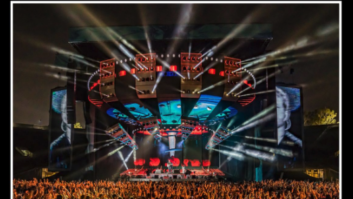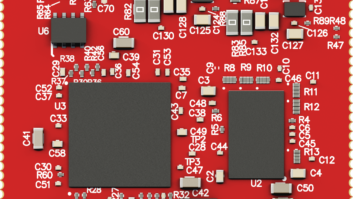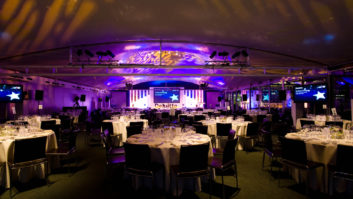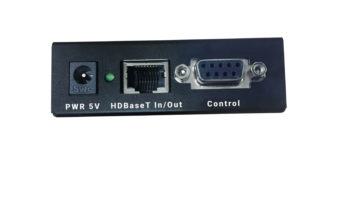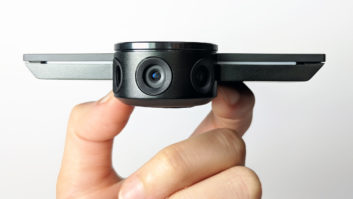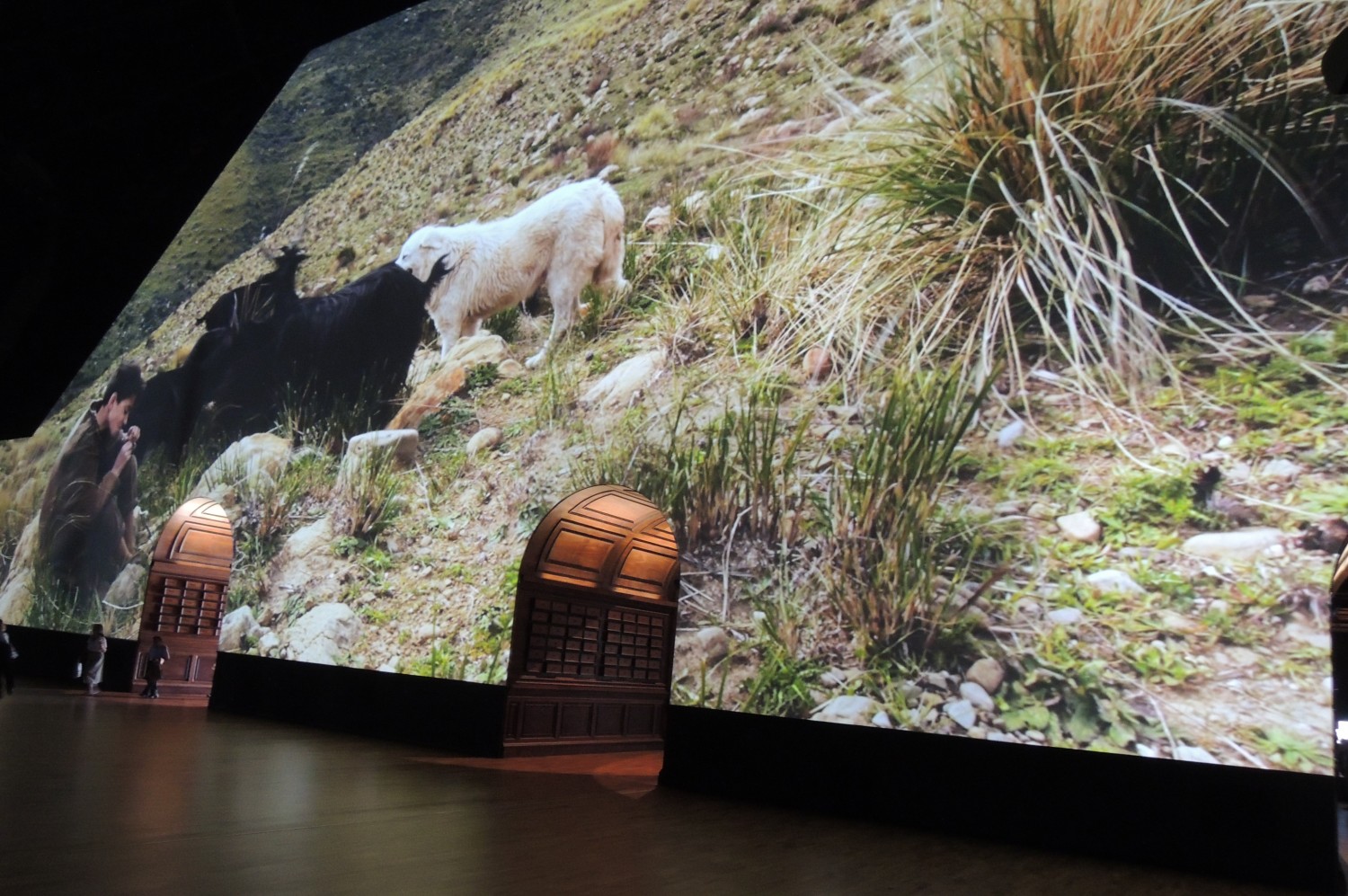
Sculpture, sets and AV and lighting technology spotlight man’s relationship with nature and its fruits at this Expo 2015 pavilion, writes Mike Clark
The first thing the majority of visitors see on their arrival at Expo 2015 in Milan is the towering 10,000sqm hill-shaped wooden structure of Pavilion Zero, curated by Davide Rampello and designed by Michele de Lucchi. The pavilion provides an introduction to the Expo site, taking visitors on a captivating journey to explore how much mankind has produced, the transformation of natural landscape, and the culture and rituals of food consumption. Mistakes made and future risks are also highlighted.
Since 1972, eclectic scenographer Giancarlo Basili, responsible for the high-impact design of each of the pavilion’s 12 ‘rooms’, has designed award-winning sets for countless opera and prose works, films by top Italian directors, videos by Italian recording artists and publicity spots. Basili translated Rampello’s visions and suggestions into theatre, and Turin’s Set Up Live won the tender for fitting out the pavilion.
Italvideo was responsible for the impressive amount of high-profile video equipment throughout and its team included senior sales manager Pietro Fuccio, Enrico Sarcinelli, network and digital infrastructure technician and Radoslav Blagoev.
The impressive entrance is inspired by a huge antique Baroque monastery library, where each of the countless drawers soaring up to the ceiling symbolises an animal, food produce and nutritional habit.
Atmospheric music is played back through two clusters, each with six modules of dB Technologies DVA Mini, plus four SB12M subs. Audio throughout was supplied by Pixie Sound and other hardware included dB Technologies L160D, Ecler Audeo 108, HK Fast, FBT MAXX2, Martin Audio F15 and EAW JF100 enclosures.
Walking through the library doors, visitors find themselves in a room hosting the projection of a short historical film by Mario Martone, based on hunting, fishing, agriculture and sheep farming. The room also features a 23m tree towering through the roof. The film, shot in 4K, is played out using nine of the 18 Dataton Watchout/Watchpax systems installed in the pavilion at a resolution Fuccio describes as “non-existent” – 8160 x 3060 pixels, adding: “We decided to try it, and it worked, in spite of the doubts on behalf of the Swedish manufacturers. The original projection mapping system creates a (46m x 17.5m) ‘vidiwall’ with 14 Panasonic PT-DZ13KE projectors.”
Here the high-impact soundtrack is reproduced by five stacked clusters, each with a pair of dB Technologies DVA T8 modules plus two DVA S1518N subs.
Planting the seed
In the next room, seeds and vegetables from all over the world form mural designs reminiscent of Dutch painter Mondrian’s ‘grid’ style. The centre hosts 13 ViVa Screen HD opaque panel (VSPO), high-performance screens flown from the ceiling, with an Epson G6550 projector projecting fruit and vegetables on each one.
Fuccio continues: “Here, the difficulty consisted in running the video content in such a way that the same image didn’t appear on two screens simultaneously as the video ’chain’ ran around the screens.
“Since we had to use the projectors in portrait mode, we asked Epson to run some trials, and they came up with lamps to which they fitted heat sinks that solved the problem.”
The following rooms host an all-black environment filled with white farm animals, one shows the tools and equipment developed through time to exploit land or capture animals. A huge antique mill is at its centre, along with a series of large vases, bottles and other containers, some dating back to thousands of years before Christ. Only the last room has projections of the products stored on them (grain, oil, etc) via two Epson 6900WU, but each has its own FX and background music sound system: 12 JB Systems K80 enclosures, 10 more JB Systems K80 and a pair of dB Technologies L160D respectively.
Audio control and power throughout the pavilion is courtesy of two Ecler Mimo 88 matrices, and 14 Crown DSi amps (eight 2000 and six 1000 models).
The more thought-provoking part of the visitor route begins with a huge videowall made up of over 500 Samsung 40in displays showing the cost of food produce on worldwide markets and how the fruits of nature are reduced to mere figures. There is also a ‘Waste’ room, highlighting a huge hill of food wasted by man with archive cinema footage of scenes showing people over-eating, projected by a Christie Roadster HD20K. Then there is a ‘disaster’ theatre using three Epson G6900W projectors and a series of mirrors that give the illusion of a much larger area, showing man-made and natural risks facing humanity (drought, nuclear accidents, tsunamis, etc).
Looking to the future
The last two rooms illustrate the possibilities of a better future via best practices, with a short film explaining the UN theme for Expo Milano 2015: The Zero Hunger Challenge – United for a sustainable world (with five Epson EB-Z10000U and an Epson EB-Z10005U) and landscapes, with other impressively large projections via 13 Epson EB-Z1000U.
Fuccio explains: “Apart from the technical aspects, the main problems involved in this project were the fact that the architect insisted on all hardware being invisible and having to obtain large-scale projections with projectors that couldn’t be installed in line, but had to be staggered to avoid obstacles that were found as construction work proceeded.
“A couple of software programs for projector management and calibration on multi-projection projects were developed by Panasonic, following our input, as was a zoom/adjustable version of a wide-angle lens. Where we had very high-resolution videos and long cable runs, we used Cat6 cable and the remainder was Cat5. Nineteen SpinetiX HMP200 players were also deployed in the pavilion.”
Interesting features were also to be found in the pavilion’s lighting. The challenging job of illuminating the pavilion was entrusted to Italian director of photography Aldo Solbiati.
He explains: “Following numerous meetings with Basili, the ideal lighting setups for the sculptures and sets was established.
“A prototype LEDKo TM moving head fixture was requested and supplied by Coemar. The Expo was an ideal testing ground, with months of almost non-stop operation! This unit will soon be on the market, targeting entertainment, in particular television and theatre applications.”
Rightly proud of the project, he concluded: “An astonishing result was achieved, as the huge pavilion was illuminated with an overall consumption of just 75kW, thanks to the fact that approximately 95% of the fixtures were LED powered.”
In fact, apart from 12 Spotlight Domino floodlights, two Robert Juliat followspots and 40 ETC Source Fours, the rest for the lighting provided by Audiolux, the contractor chosen by Setup Live, was all LED based. It consisted of 80 Anolis ArcLine Optic 24 SW LED bars, 135 Coemar LEDko P White, 22 Coemar LEDko VariWhite, 20 Coemar LEDKo moving head units, five Coemar Parlite LED RGB, 50 iGuzzini LED Plus recessed luminaires and 210m of iGuzzini Underscore LED strip.
Solbiati was assisted by LD Marco Piva, who, among other things, programmed each individual room’s lighting with three consoles, which remained on site: an MA Lighting GrandMA2 Light and two Compulite Spark 4D.


